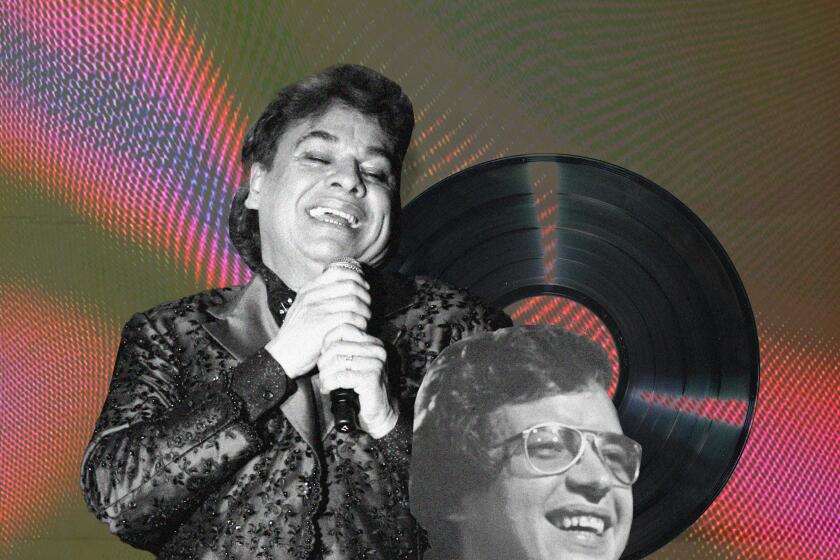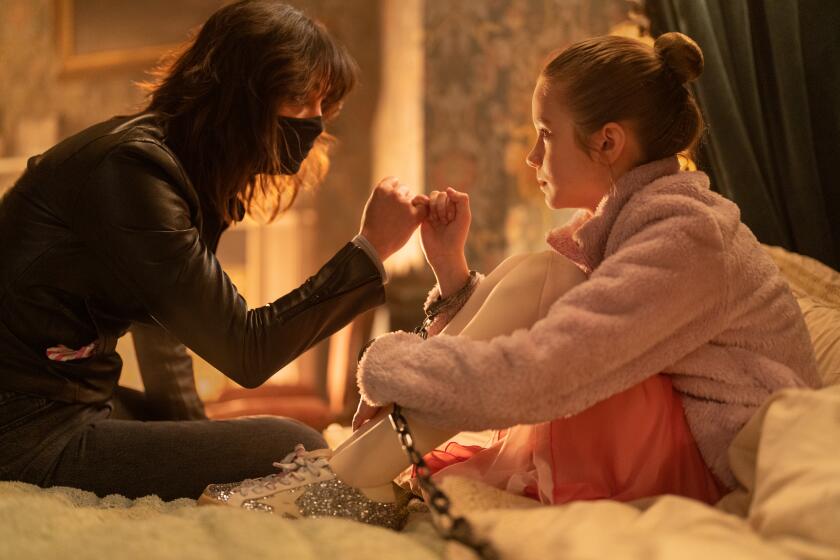Review: Finding oneself in ‘Elsewhere, California’
Elsewhere, California
A Novel
Dana Johnson
Counterpoint: 270 pp., $15.95 paper
When hasn’t California been a cure? Either a plan B or C — or the “fix.” Fit within that reinvention story, Los Angeles in particular often figures as the white-hot destination: the place where the greatest transformation might take place. Though that gamble may bestow great dividends, too many discover that the odds more likely suggest the delivery of punishing, irrecoverable loss.
Dana Johnson’s first novel, “Elsewhere, California,” explores the space between reinvention and ruin — the freighted pause waiting for resolution.
Woven into this familiar there-to-here narrative is an infrequently voiced twist — the journey told from the point of view of daughters and sons of African American parents who caught the tail wind of the Great Migration out of the South and into the noisy mix of Greater Los Angeles.
The there-to-here story in Avery’s case might as well be a tale of immigrating to another country. Customs, language, values (and with them unexpressed expectations) are a minefield to be negotiated and conquered.
Johnson finesses this undertold story with grace, sensitivity and nuance. Not just the exterior land-of-opportunity-story arc but also the interior struggle toward a newly framed identity: race remixed. Johnson constructs her story around the generation that grew up in the late 1960s and 1970s and came of age in the 1980s — the embodiment of the Rev.Martin Luther King Jr.’s dream. A looming question — What is gained and what is lost in that transaction? — lay at the heart of “Elsewhere, California.”
When we meet Johnson’s protagonist, Avery Arlington, an emerging African American artist (she’s a painter who has drifted into assemblage work), she’s recently turned 40 but is still piecing together her own life — and a sense of her place in it. She’s spent a lifetime slipping in and out of identities, a veritable color wheel of blackness mixed with proximity to otherness. You can feel her deep fatigue in the utterance: “I was already negotiating the twists and turns of the people and personalities I could be to anyone at any given time, so kindness and gentleness, what good were those things to me?”
Though she is settled in a relationship with a successful lawyer, Massimo, an up-from-nothing Italian immigrant with whom she lives in a glass-and-steel showplace high in Beachwood Canyon, Avery continues to erect walls, obscuring her core … even to herself.
The conceit on which the book turns is her journey to unlock the why, a peeling of layers. She entrusts a hypnotist who helps her travel to childhood — the building blocks. At first, it might seem like an awkward “La La Land” contrivance, but it allows Johnson to tap into Avery’s childhood “voice,” literally her changing language and consequently her id.
Avery’s recovered memory sets us down at the moment the Arlingtons are once again decamping. West 80th Street in southwestern Los Angeles has become a minefield of gang-circumscribed boundaries and drive-by violence. Their next stop — West Covina — though only half an hour away, might as well be another planet. And, as young Avery notes in a voice that’s still under the sway of her parents’ Tennessee inflection, “[A]fter awhile L.A. start looking different. Dont see no trash in the street, no liquor stores” and soon they are on the highway headed east. “I see hills … and these flowers … and cows.… How come I never seen this before if its so close?”
West Covina is not just culture shock but also a seismic event. In every way, Avery can’t seem to rest easy: In her skin, in her body, in her head. Neither her femininity nor her blackness fits prescribed definitions. She pushes out of those assumptions — not because she’s a rebel but because she just can’t bear how narrow and uncomfortable they seem.
Johnson, an assistant professor of English at USC, first introduced readers to Avery in “Break Any Woman Down,” a collection of stories that won theFlannery O’ConnorShort Fiction Award in 2001. Although the novel fills in Avery’s back story, it also exhibits Johnson’s fearlessness. She goes deep into territory often simplified or sidestepped entirely — the “limbo” of elusive identity, of something that flummoxes or embarrasses. She’s not just questioning what “blackness” is but whiteness — and otherness — and all that lie beneath it. Consequently, Avery’s evolution — a black woman trying to claim her place — is as heartbreaking as it is humorous, powerful as it is poignant, because Johnson so assertively confronts those complexities.
The narrative itself is a collage: Johnson carefully layers the scraps of mismatched experiences that make up Avery’s messy steps to self-hood: Johnson pays close attention to the foreground and the background, expertly re-animating the neon-hued, sugary pop culture of the early to mid-’70s. Accordingly, there are unavoidable collisions. The arguments that Avery has with her hard-working, practical parents about school, money and manners are just as fierce and coded as those about tacking up fold-outs of Tiger Beat heartthrobs: “Avery, he say, Who the hell are all them white boys? Get that … down off those walls right now, Daddy say, So I did.”
Like souvenirs — evidence of her journey toward self — Avery picks up bits and pieces along life travels. Some stick, some don’t: slang and music from her new San Gabriel Valley neighborhood, mysteries and rituals from her summers visiting the South, and the understanding that no one place feels quite like a resting place, a place where she feels fully knowable.
Johnson extends an apt metaphor — Avery’s transformation from a painter deeply preoccupied by gradations of color to assemblage artist working to make sense of the mismatched pieces and the complex overlays. In reexamining her trajectory, Avery begins to understand that the experience wasn’t so much a casting off but a layering: a ritual of gathering language, experience, identifiers that fashion something new.
As Avery moves closer to making peace with her path and herself, her language changes, claims all of the influences — the “dudes” and “rads” of her ‘70s fanzines, the contextualizing sense of “home” her family carried back from Tennessee — and some place within that maturation she begins to balance all.
She’s as much Tennessee and cicadas as she is Dodger Blue and the Bay City Rollers. Her parents’ wager: Their gains and losses was their story. She must be author of her own: an artist with her own clear vision, organizing the pieces not to fit but to coexist. “Everybody still cares about having and holding on to everything they have,” Avery comes to understand, “even if it doesn’t make sense.”
George is a Los Angeles-based journalist and an assistant professor of English and journalism at Loyola Marymount University.
More to Read
The biggest entertainment stories
Get our big stories about Hollywood, film, television, music, arts, culture and more right in your inbox as soon as they publish.
You may occasionally receive promotional content from the Los Angeles Times.






